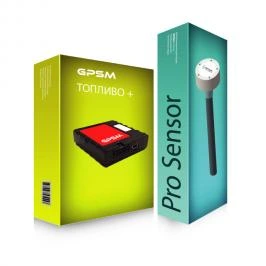
How different are the odometer readings of a car and a satellite GPS vehicle monitoring system?
Is there a difference between the odometer reading of the driven kilometers and the GPS data of the satellite tracking system? There is an error, since information is obtained in different ways. Odometer readings depend on the operation of electro-mechanical devices that read the wheel speed in motion. The calculation of satellite monitoring data is carried out using the mathematical determination of the location of the vehicle relative to navigation satellites. Consider the accuracy of these systems, as well as possible errors.
Causes of errors:
- admissible inaccuracies of the device;
- operation of "bald" or non-standard rubber;
- errors in the GPS system.
All odometers that work on cars are not precision instruments. Acceptable error standards exist for each device model. These standards apply only to odometers. That is, any design changes, as well as wear of consumable parts of the machine, will negatively affect the error of the device.
Specifications require speedometers not to underestimate speed readings. The odometer is structurally linked to a device that takes into account the speed of movement. Therefore, it provides inflated data. The speedometer error indicator can give figures of positive dynamics, but not higher than 10% + 6 km / h to the real speed.
Experience shows that car manufacturers set the speedometer and odometer settings by 6-9% more. This is mentioned by car owners on thematic forums and blogs. There is a suspicion that car manufacturers do not only think about the safety of passengers and drivers. Legally, they reduce the real mileage, for example, by promising warranty service up to 100 thousand, but they remove it when the real figure is 94 thousand.
The mechanical device has an inaccuracy of up to 5%
The indicator increases to 12-15% under the influence of the following conditions:
- wear of parts and assemblies;
- installation of "non-native" spare parts;
- difficult operating conditions of transport.
The performance of the electromechanical odometer depends on the accuracy of the measurement of the number of pulses received from the speed sensor. That is, the reading of the device is more accurate, and can be up to 5-8 percent.
An additional factor should not be ruled out - the operation of the odometer can be influenced by the driver of the vehicle. The Internet is filled with examples of how "enterprising" chauffeurs use small electric motors to increase their mileage. If the monitoring system shows an underestimated mileage figure, then to "correct" the readings, the driver and the dispatcher of the enterprise may collude. Thus, the difference in the readings of different systems will be small, but the owner will not know the real "uncoiled" figure.
The following factors can affect the performance of the GPS tracking system:
- Reducing the speed of signals in the ionosphere. The system works on the principle that a radio signal propagates at the speed of light. But this condition is met only in an airless space. In reality, a radio signal passing through the planet's ionosphere at an altitude of 110-190 km collides with a large number of charged particles. Therefore, errors arise in calculating the coordinates of the satellites. When passing through the troposphere, the signals encounter distortions due to water vapor;
- Inaccuracies in the work of the clocks on the tracking satellites. Forced correction of readings is performed periodically;
- Application of reflected signals. Operation of the tracker: in hilly terrain, surrounded by high-rise buildings, when driving in mountain gorges, also affects the accuracy of determining coordinates. But this error is small;
- Ephemeral mistakes. The difference between the position of the tracking satellite and its real coordinates in orbit. The tracking stations regularly adjust the position of the satellites and send the data to the server. Next, the trajectories are calculated and the atomic clock is corrected. New data is sent to satellites, which in turn update the information on GPS terminals;
- Geometric error. The calculation of the distance to the satellites is made with certain errors. The intersection lines are imprecise. The convergence of satellites creates a wide area. The measurement accuracy depends on the increase in the angle of direction to the satellites.
The official indicator of the error of the GPS beacon GPSM ranges from 2-7 meters, which is proportional to 1.5% in determining the accuracy of the run. The GPSM U9 and GPSM Pro trackers are certified compulsory for use as measuring instruments. In order to reduce the cost of paying for cellular communications, the device sends the coordinates of the object at a certain frequency. This increases the error in calculating the distance traveled to 2%. The total error of the GPS vehicle tracking system does not exceed 3.5%.
Consultation
GPSM specialists will always help you choose the best solution for your business. It is easy to order a turnkey installation, just call +38 044 362 29 56. You can also send a request to info@gpsm.ua indicating the type of your transport and contacts. We will promptly send you a letter with a commercial offer and call you back.
✅GPS vehicle monitoring and fuel control: https://gpsm.ua/sistema-kontrolja-topliva-v-gruzovom-transporte-gpsm-pro--dut/
✅GPS trackers: https://gpsm.ua/store/auto/
✅Fuel level sensors: https://gpsm.ua/store/fuel-sensors/
✅Fuel consumption sensors: https://gpsm.ua/store/rashodomeri-dizelnogo-topliva/
Our office address: Kiev, Academician Korolev Avenue, 13b, office 7
Our Instagram: https://www.instagram.com/gpsm.ua/









Comments
Thanks!
Your comment has been sent.
Be the first to leave a comment here!